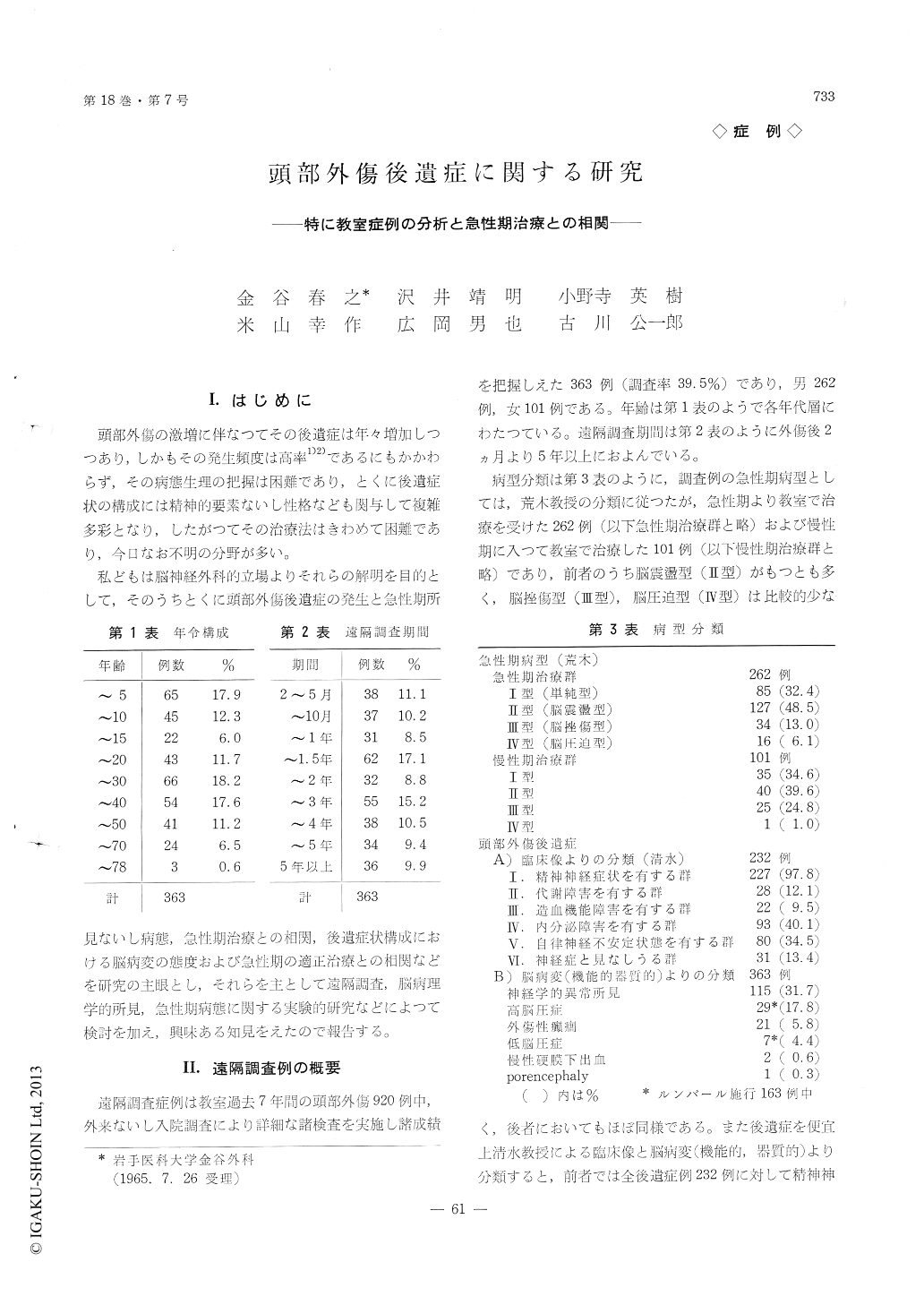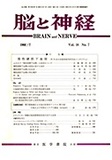Japanese
English
- 有料閲覧
- Abstract 文献概要
- 1ページ目 Look Inside
I.はじめに
頭部外傷の激増に伴なつてその後遺症は年々増加しつつあり,しかもその発生頻度は高率1)2)であるにもかかわらず,その病態生理の把握は困難であり,とくに後遺症状の構成には精神的要素ないし性格なども関与して複雑多彩となり,したがってその治療法はきわめて困難であり,今日なお不明の分野が多い。
私どもは脳神経外科的立場よりそれらの解明を目的として,そのうちとくに頭部外傷後遺症の発生と急性期所見ないし病態,急性期治療との相関,後遺症状構成における脳病変の態度および急性期の適正治療との相関などを研究の主眼とし,それらを主として遠隔調査,脳病理学的所見,急性期病態に関する実験的研究などによつて検討を加え,興味ある知見をえたので報告する。
A follow up was studied on 363 cases with head injuries in order to investigate the clinical and patho-logical findings of the posttraumatic sequelae. The results were as follows :
1. The incidence of posttraumatic sequelae was 53.4 % of 262 cases who had been treated in our depart-ment. Even slight head injuries remained a relatively high percentage of the sequelae. The incidence of the sequelae in the cases within 15 years of age was far less than in ones above 15 years.
2. It was revealed that neurological and psychic disturbances among these cases with the secuelae were found in a high rate of 97.8%. Symptomes such as heavy sensation of head, headache, amnesia, lack of work-ability, dizziness, irritability and depressiveness etc, were noticed most frecuently, but only 1. 3% of the total cases showed neurosis.
3. Intracerebral petechia and massive hemorrhage such as epidural and subdural hematoma were observed in 75% of the total autopsy cases. As the sites of these hemorrhage were mostly frontal and temporal lobe, it might be presumed that various complains in the sequelae owed to hemorrhage were generally con-sidered frontal sign.
4. In the treatment of the sequelae, the administra-tion of ACTH-Z was effective for the recovery of their symptomes and decrease of intracerebral pressure, when the case showed the lower level of 17 KS and 17 OHCS in his urine than the normal and was acti-vated by ACTH intravenous injection.
5. The incidence of the sequelae in the cases whose complaints disappeared after treatment in the acute stage was 35.5%, while in the cases whose complaints had remained even after treatment showed a high rate of 86.5%.
6. The incidence of the sequelae showed in the cases within 250 mm H2O of CSF pressure in the acute stage were found 54.4%, while in the cases above them were 73.8%.
7. Treatment thoroughly in the acute stage with hypotensive agents of the CSF pressure, tranquilizer, acceralators of the cerebrovascular circulation, vitami-nes, cerebral activators and stellate ganglion block etc. made the incidence of the sequelae reduce by a half.

Copyright © 1966, Igaku-Shoin Ltd. All rights reserved.


